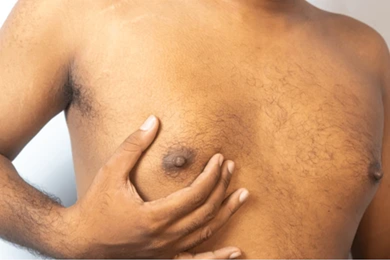
Unilateral gynecomastia, or one sided gynecomastia, can be distressing, especially for young males. This condition causes breast tissue to enlarge on one side of the chest, resulting in asymmetric gynecomastia. If you’re dealing with this condition, seeking professional advice and exploring your treatment options is essential.
At Redefine Clinic, Dr. Harikiran Chekuri, an esteemed plastic surgeon in Hyderabad, offers personalized, compassionate care for treating unilateral gynecomastia. His extensive experience and commitment to patient well-being ensure that each individual receives a thorough evaluation and a tailored treatment plan.
In this blog, we’ll delve into the causes, symptoms, and treatment options for unilateral gynecomastia.
What is Unilateral Gynecomastia?
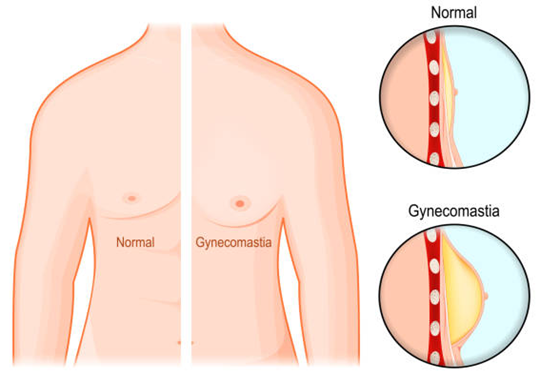
Unilateral gynecomastia is the enlargement of breast tissue on one side of the chest. This condition causes noticeable asymmetry, often making you feel self-conscious. Up to 60% of adolescent males experience some form of gynecomastia. But when it occurs only on one side, it can be particularly distressing. Unlike typical gynecomastia, which affects both sides, unilateral gynecomastia creates a lopsided appearance.
How Common is Unilateral Gynecomastia?
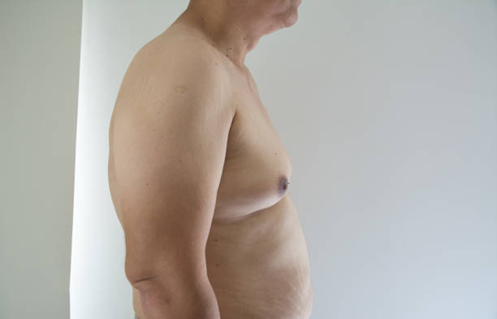
Although less common than bilateral gynecomastia, unilateral gynecomastia affects a significant number of individuals. Statistics show that about 25% of all gynecomastia cases are unilateral. This condition can occur at any age but is more prevalent during adolescence.
Hormonal fluctuations during puberty can trigger unilateral gynecomastia in young males. In some individuals, the condition persists into adulthood, requiring medical intervention.
Risk Factors / Causes of Unilateral Gynaecomastia
- Hormonal Imbalance:
Fluctuations in hormones, especially increased oestrogen relative to testosterone, can cause unilateral gynecomastia. This can occur during puberty, ageing, or due to conditions like hypogonadism or hyperthyroidism.
- Medications:
Certain antidepressants, antipsychotics, and anti-anxiety drugs can lead to asymmetric gynecomastia by interfering with hormone levels or oestrogen metabolism.
- Health Conditions:
Liver disease, kidney failure, and tumors of the testes, adrenal glands, or pituitary gland can disrupt hormones. This can increase the risk of unilateral gynecomastia.
- Genetics:
A family history of gynecomastia can indicate a genetic predisposition to developing the condition.
- Lifestyle Factors:
Excessive alcohol consumption and illicit drug use can contribute to hormonal imbalances, raising the risk of one sided gynecomastia.
- Obesity:
Excess body fat elevates oestrogen production, which can cause unilateral gynecomastia. Up to 70% of adolescent boys with gynecomastia are overweight or obese.
Symptoms of Unilateral Gynecomastia

- Breast Enlargement:
Noticeable swelling or breast tissue enlargement on one side of the chest.
- Asymmetry:
Notable difference in size or shape between the breasts, with one appearing larger or more developed than the other.
- Tenderness or Pain:
Sensitivity or discomfort in the affected breast, ranging from mild to severe.
- Puffy Nipple:
Development of a protruding or puffy nipple on the affected side, often accompanied by tenderness or soreness.
These symptoms can vary in severity from person to person. If you’re experiencing any of these signs, consult a healthcare expert for evaluation and guidance tailored to your specific needs.
Diagnosis of Unilateral Gynecomastia
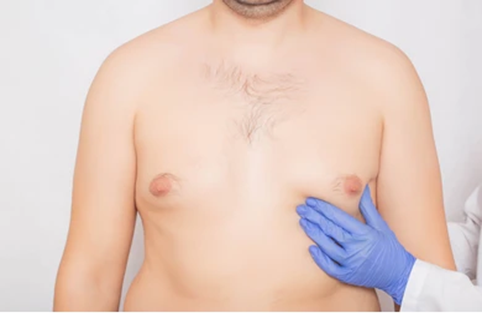
- Physical Examination:
Your doctor will examine your chest to assess the breast tissue enlargement.
- Medical History:
They’ll ask about your medical history, medications, past illnesses, and family history of gynecomastia.
- Hormone Levels:
Blood tests may be done to check hormone levels like testosterone and oestrogen.
- Imaging Tests:
Ultrasound or mammography might be used to visualize the breast tissue and rule out other causes.
Early diagnosis and intervention can lead to better outcomes. So, don’t hesitate to discuss any concerns with your doctor.
How to Treat Unilateral Gynecomastia?
At Redefine, Dr. Harikiran Chekuri, a competent plastic and cosmetic surgeon in Hyderabad, offers tailored unilateral gynecomastia treatments. These include non-surgical and surgical strategies:
- Lifestyle Modifications:
The doctor may advise you to maintain a healthy diet and exercise regularly. Also, they may suggest avoiding alcohol consumption and recreational drugs known to cause gynecomastia.
- Medical Therapies:
Hormonal imbalances can contribute to unilateral gynecomastia. Your doctor may prescribe medications to address these imbalances and reduce breast tissue enlargement.
- Surgical Procedures:
In cases where lifestyle changes and medications aren’t effective, surgical intervention may be necessary. Surgical options include:
- Liposuction:

This procedure involves removing excess fat from the chest area through small incisions. Liposuction is particularly beneficial for patients with fatty tissue accumulation in the chest, helping to sculpt a smoother contour.
- Excision Surgery:

In cases where glandular tissue is the primary concern, excision surgery may be recommended. The surgeon removes the excess glandular tissue during this procedure. This results in a flatter, more masculine chest contour.
Dr. Chekuri employs advanced surgical techniques to minimize scarring and ensure a quick recovery. For unilateral gynecomastia, surgical treatments provide a permanent solution. They offer long-lasting results and renewed confidence in your appearance.
Frequently Asked Questions:
- Can unilateral gynecomastia go away on its own?
In many cases, unilateral gynecomastia resolves without treatment, especially during puberty. However, if it persists into adulthood, medical intervention may be necessary.
- What are the risks associated with untreated unilateral gynecomastia?
Untreated unilateral gynecomastia may lead to persistent breast enlargement, psychological distress, and self-esteem issues, impacting overall quality of life.
- What should I expect during recovery from unilateral gynecomastia surgery?
Recovery from unilateral gynecomastia surgery involves:
- wearing compression garments
- managing discomfort with prescribed pain medications
- following post-operative instructions provided by your surgeon
- Can unilateral gynecomastia recur after treatment?
While recurrence is rare, unilateral gynecomastia may return if the underlying cause is not adequately addressed or if new hormonal imbalances occur.
- How to prevent unilateral gynecomastia?
Prevent unilateral gynecomastia by:
- Maintaining a healthy weight
- Exercising regularly
- Avoiding hormonal disruptors (certain drugs)
- Limiting alcohol consumption
Regular health check-ups can also help catch any issues early.

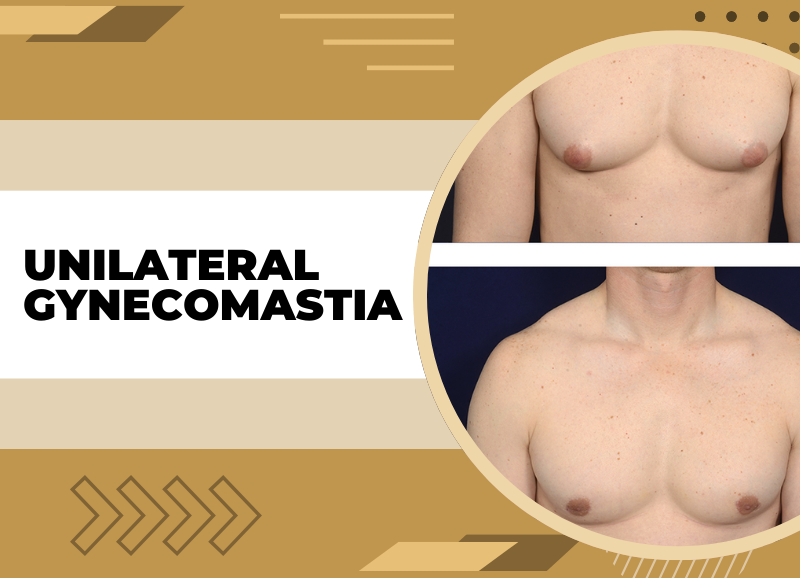
Recent Comments